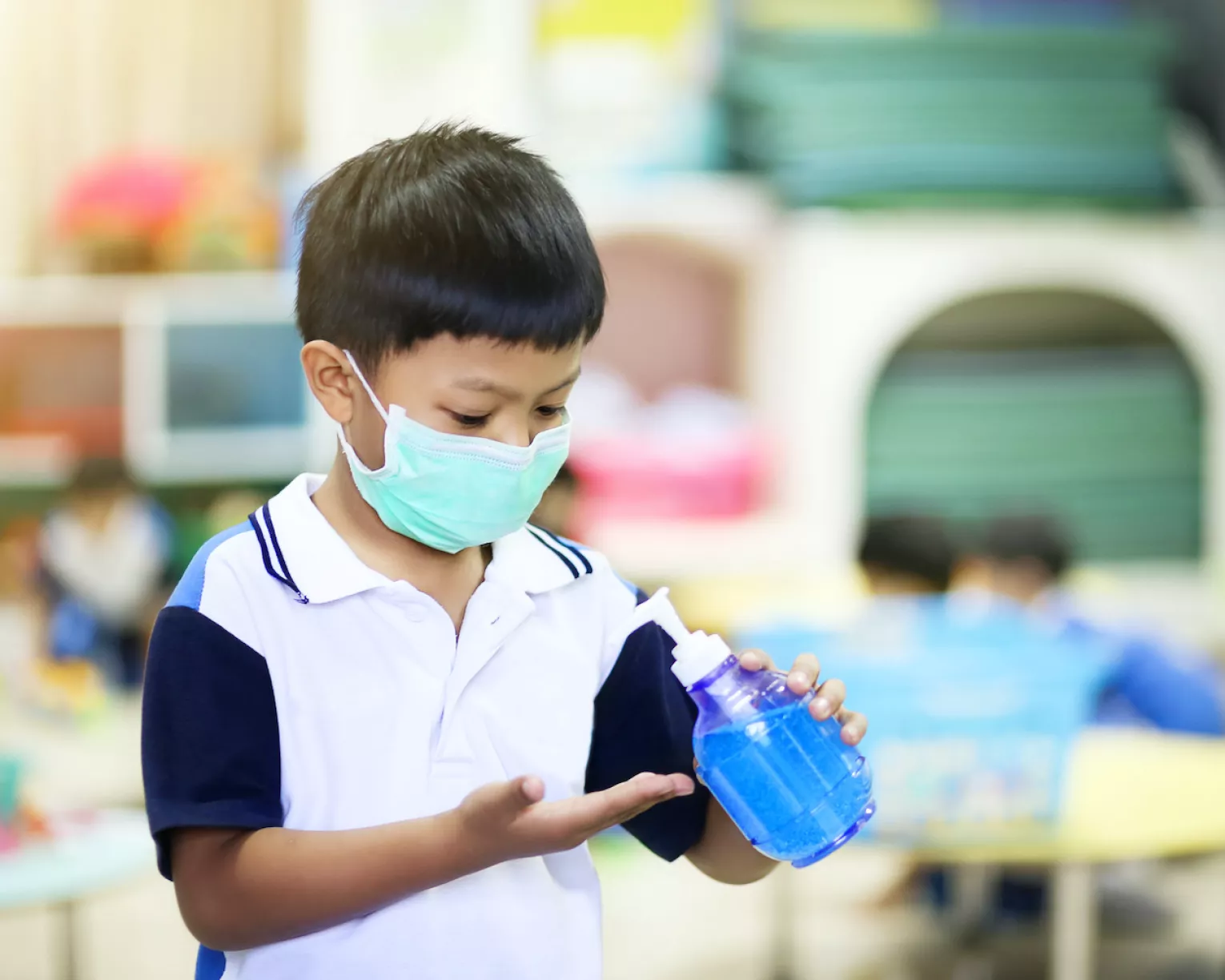PRIORITIZE IN-PERSON LEARNING OVER EXTRACURRICULAR AND ATHLETIC ACTIVITIES.*
Schools should prioritize in-person learning over extracurricular activities and athletics programs, keeping with CDC recommendations for safe levels of interaction depending on community transmission of COVID-19. Schools should continue to offer music, performing arts, physical education, health education, and athletics programs as part of a well-rounded education, even if some activities must be offered virtually.
TAKE PRECAUTIONS, INCLUDING MASKS, FOR MUSIC AND PERFORMING ARTS.*
Generally, CDC indicates that wearing masks must be required for students, visitors, and educators in all job categories. The ED Handbook provides multiple practical solutions for music and performing arts, including instrument-specific strategies, optimizing ventilation, using transparent shields, and using portable amplifiers to keep voices low. Schools should consider holding music and performance classes outdoors, when safe to do so. When transmission rates are moderate or substantial, masks should be required, and, when high, extracurriculars should be virtual only.
PRIORITIZE SPORTS THAT POSE THE FEWEST RISKS IN COMMUNITIES WITH LOW TRANSMISSION RATES.*
The CDC guidance suggests that “schools conduct sports activities in ways that reduce the risk of transmission of COVID-19 to players, families, coaches, and communities, which may include considering which sports can be safely played, prioritizing outdoor sports or sports that involve the least physical contact, and mask wearing.” Additionally, schools should limit cross-school transfers, provide prepackaged snacks, and eliminate locker room use. When transmission rates are moderate or substantial, masks should be required, and, when high, sports should be virtual only.
For more information, review the CDC guidance and ED Handbook.
HOW TO CREATE SAFE, JUST & HEALTHY SCHOOLS
Ensuring our school communities are safe, just, and healthy places to learn not only protects us from the spread of COVID-19 but also helps us improve school conditions so that our students, educators, and staff—whether Black, brown, or white, Native or newcomer—can thrive. Together, we can advocate for the schools our students, educators, and communities deserve.
Creating safe, healthy, and welcoming schools takes all of us doing our part but also requires school and district leaders to have processes in place to ensure every student has access to the correct type of mask.
Extracurricular activities and athletic programs play an important role in the school community and student experience. To ensure all families—including those who lack access to broadband and technology—receive important safety updates, school and district leaders must implement effective cancellation- and change-notification systems that provide information in appropriate languages and formats that everyone in the school community can understand.
NEA MEMBERS: ACT NOW
Coordinate with your local association to ensure collective bargaining agreements (CBAs) are followed or revisions are negotiated, as needed, to address safety considerations regarding extracurricular activities and athletics programs.
If you are not covered by a CBA, seek opportunities to work with school administrators to ensure steps outlined here are adopted. In either case, make sure that educators are included in the development, implementation, and review of COVID-19 responses.
Contact your state-elected officials and district leaders and demand that your school receives the necessary funding for proper supplies to participate safely in extracurricular and athletic activities.
Continue to provide information and support to the most vulnerable communities as it relates to safety.
Share this guidance with your fellow educators and school leaders.
*Based on CDC guidance and ED Handbook.
Join Our Movement


